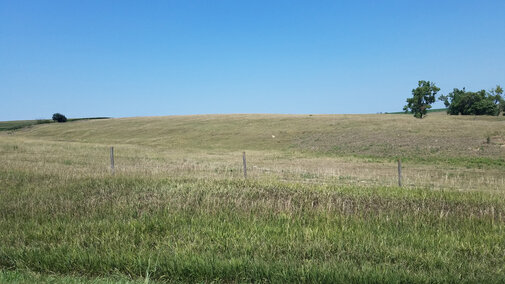Thickening Alfalfa with Spring Cereals
Have you noticed any winter injury to your alfalfa fields or maybe you have some older stands that are thin?
Maximizing tonnage from every inch of rain your alfalfa hay fields receive this year may be necessary. Unfortunately, alfalfa uses quite a bit of water for each ton of hay, especially as temperatures rise. So, it is critical to get as much tonnage out of first cutting as possible, before summer heat sets in.
One way to boost first cutting hay yield from thin or winter damaged alfalfa stands is to drill cereals like oats, spring triticale or spring barley into those stands. Depending on the thickness of the alfalfa stand, drill 30 to 60 pounds per acre directly into your existing stand as soon as possible. Try to get the seed about one inch deep. These cereals will use spring moisture very efficiently to add tonnage to your first cutting.
Where the alfalfa is thick, you may not get much, but in thin spots these cereals should fill in rapidly. These spring cereals will have rapid growth in late May and early June, so cutting your hay a little later than usual will help you get the most yield benefit from this addition.
Getting the most out of each inch of moisture could be especially important this year. Using cereals is one way to do it.
Seeding Alfalfa No-Till
Most plantings of alfalfa begin with a conventionally tilled and prepared seedbed. While no one can predict the weather, those wanting to minimize moisture loss during planting may consider a no-till option.
Fields with low levels of crop residue remaining from last year and the always-present need to conserve soil moisture might make no-till a good option for establish alfalfa this spring.
There are some obvious advantages to seeding no-till, like fuel and time savings due to fewer trips across the field. In addition, you reduce soil erosion by retaining crop residues rather than tilling them under. No-till also conserves soil moisture, which may be the best reason of all this spring. Also, due to lack of tillage, the seedbed is good and firm for rapid seedling emergence. Finally, no-till will limit the number of new weed seeds near the soil surface.
Disadvantages to no-till include relying solely on clipping or post-emerge herbicides for weed control. Fortunately, we have good post-emerge herbicides available to control most weed problems. Another problem is ridges from prior row crops that can interfere with uniform seeding as well as make fields rough for future haying operations. And finally, some drills do not work well for no-till seeding so equipment might limit your options.
If you can do it, though, no-till alfalfa is worth trying. It works really well in bean stubble and almost as well in small grain stubble. No-till is a bit more difficult in corn and milo stubble, especially if there is much row ridging. Be sure to kill any early weeds with Roundup® or Gramoxone® before planting. And last but not least, use a drill that places seed about one-half inch deep and then covers seed with soil using a good press wheel.
Try no-till alfalfa. It could be very effective this year.
Herbicide Plans for Later Annual Forages
Have you selected herbicides for your corn, soybeans and other crops? For livestock producers, this is a reminder to doublecheck herbicide labels before finalizing your plans to grow/hay or graze annual forages and cover crops following corn or soybeans.
Forage annual cover crops such as millets and sorghums may be nice complements to your corn and soybean cropping rotations; however, their intended use as a forage can bring frustrations due to herbicide limitations.
Many forages, especially legumes, are impacted by herbicide carryover such as atrazine. Often, perennial grasses and alfalfa also are sensitive to herbicide carryover.
Most herbicides list crop rotation intervals or waiting time from the chemical was applied until when the next crops can be safely planted. Note that haying and grazing interval times are different than crop rotation intervals, and usually require longer waiting periods.
So, if the next forage or cover crop being grown following the corn and soybeans may be used for hay or forage, read the cover crops and grazing restrictions herbicide label sections before making your final herbicides selection.
Our Nebraska Extension “Guide for Weeds, Diseases and Insect” (publication EC130) provides comparison table references for many specific forages and cover crops regarding waiting times. These required label monthly intervals from herbicide application to forage usage can range from zero to over 10. So, it is important to read and follow all label provisions.
If the forage cover crop species that you intend to plant is not listed on the label, you must follow the rotation restrictions listed for “other crops.”

